
Gracilaria is a genus of red algae (Rhodophyta) notable for its economic importance as an agarophyte, as well as its use as a food for humans and various species of shellfish. Various species in the genus are cultivated among Asia, South America, Africa and Oceania.
Thorea is a genus of freshwater algae in the Phylum Rhodophyta. Thorea is a small alga with filaments up to 200 cm long, dark green in colour and not red as are marine Rhodophyta. The filaments have only as few secondary branches.

Bornetella is a genus of green algae in the family Dasycladaceae.

Paulschulzia is a genus of green algae, specifically of the family Tetrasporaceae.
Rosenvingiella is a genus of green algae in the family Prasiolaceae.
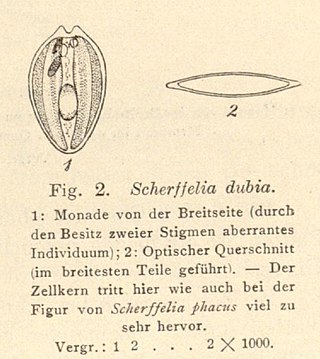
Scherffelia is a genus of green algae in the family Chlorodendraceae.

Schroederiella is a genus of green algae in the family Scenedesmaceae.

Scourfieldia is a genus of green algae in the family Scourfieldiaceae. Cardiomona Korshikov is an invalid synonym.
Treubaria is a genus of green algae, the sole genus in the family Treubariaceae.
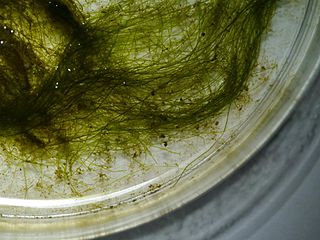
Vaucheria is a genus of Xanthophyceae or yellow-green algae known as water felt. It is one of only two genera in the family Vaucheriaceae. The type species of the genus is Vaucheria disperma.
Bangia is an extant genus of division Rhodophyta that grows in marine or freshwater habitats. Bangia has small thalli with rapid growth and high reproductive output, and exhibits behavior characteristic of r-selected species. The plants are attached by down-growing rhizoids, usually in dense purple-black to rust-colored clumps. The chloroplasts of Bangia, like others in the division Rhodophyta, contain chlorophyll a and sometimes chlorophyll d, as well as accessory pigments such as phycobilin pigments and xanthophylls. Depending on the relative proportions of these pigments and the light conditions, the overall color of the plant can range from green to red to purple to grey; however, the red pigment, phycoerythrin, is usually dominant.

Jania is a genus of red macroalgae with hard, calcareous, branching skeletons in the family Corallinaceae.

Laurencia is a genus of red algae that grow in temperate and tropical shore areas, in littoral to sublittoral habitats, at depths up to 65 m (213 ft).
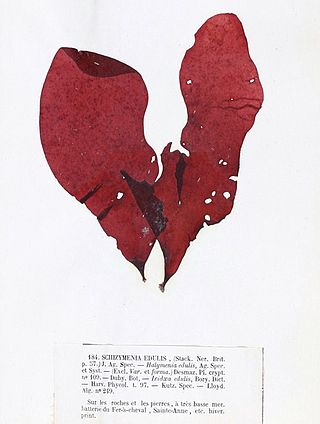
Dumontiaceae is a red alga family in the order Gigartinales.

Crouania is a genus of red algae (Rhodophyta) in the Callithamniaceae family. The name of the genus honours the French born Crouan brothers, Pierre-Louis Crouan and Hippolyte-Marie Crouan. It was first described by Jacob Georg Agardh in 1842, and the type species is Crouania attenuata.
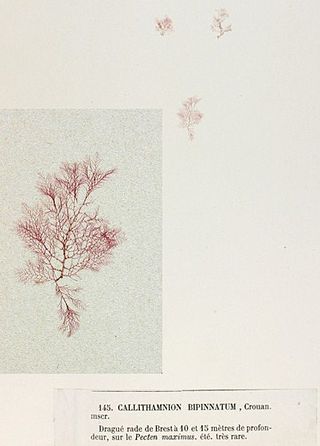
Aglaothamnion is a genus of algae belonging to the family Callithamniaceae.

Naccariaceae is a family of red algae in the order Bonnemaisoniales, with 3 monotypic genera that are found in both the Pacific and Atlantic Oceans.

Wrangelia is a genus of red algae in the family Wrangeliaceae.

Callithamnion is a genus of algae belonging to the family Callithamniaceae.
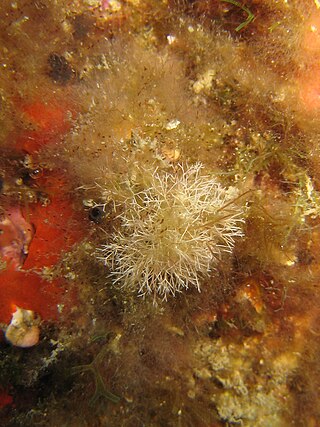
Liagoraceae is a family of red algae (Rhodophyta) in the order Nemaliales. The type genus is LiagoraJ.V.Lamouroux.















